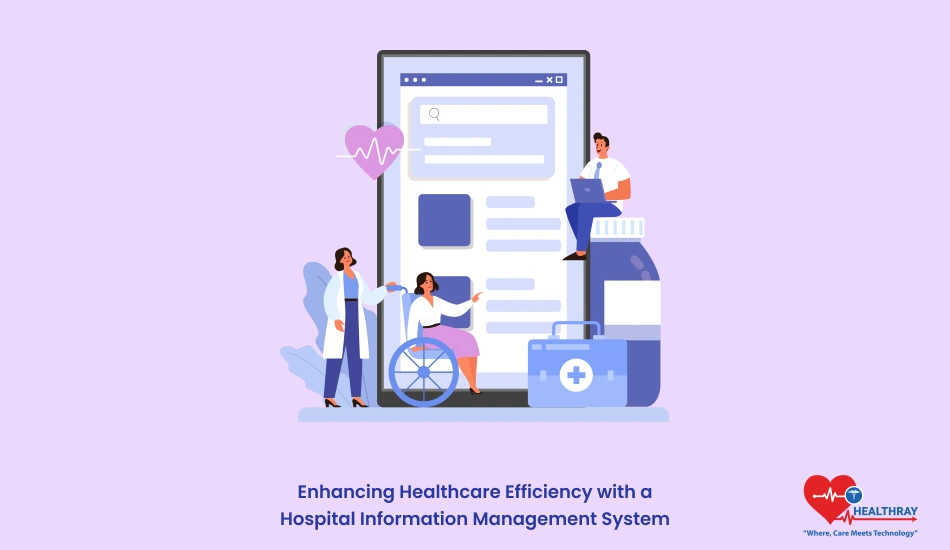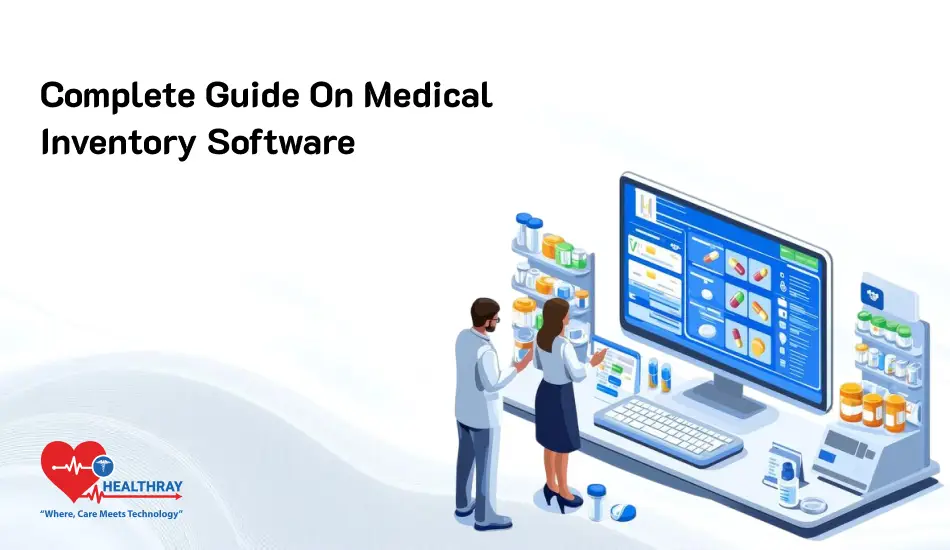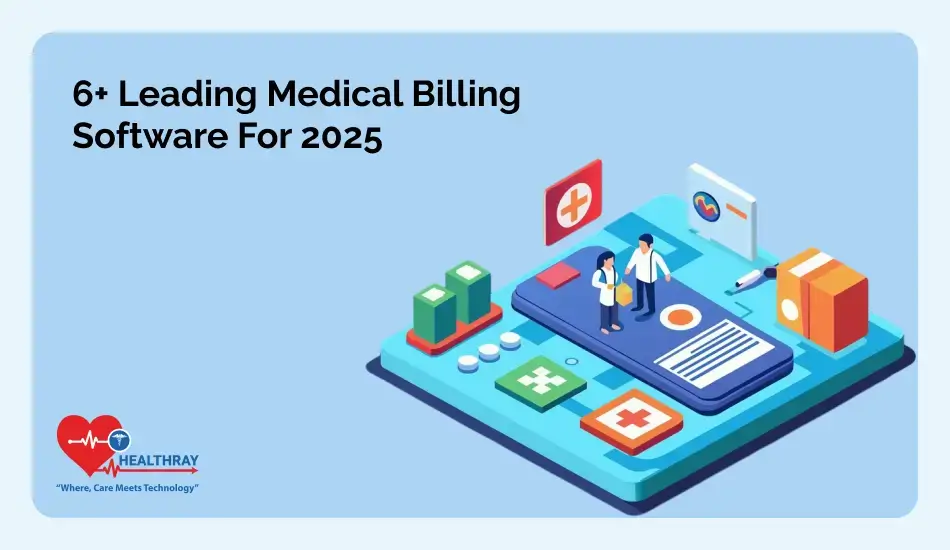Successful health care management is not just a goal, but a demand to provide qualitative patient care, great efficiency of facilities, and cost reduction. But for many healthcare facilities, managing patient data, tracking resources, and handling billing can feel like an endless cycle of paperwork and administrative bottlenecks. This is where a Hospital Information Management System (HIMS) steps in.
A Hospital Information Management System underwrites the structure, and effectiveness of healthcare personnel for almost every function of hospital operation. Administrative staff and frontline staff have taken advantage of HIMS literature ranging from record keeping to billing, and even allocation of resources. It helps create more efficient hospitals, reduce adverse events and improve patients’ experience.
In this article, we’ll break down how HIMS works, the specific efficiency challenges it addresses, and why healthcare administrators and executives should consider it as a vital investment. We’ll also look at the core features that make an effective HIMS, steps to successful implementation, and some real-world results that highlight its value. Healthcare professionals and others looking to enhance efficiency this guide offers a grounded blueprint of what HIMS can be and how to implement it in the workplace.
What is a Hospital Information Management System?

Adverse events in hospital are better managed by using the Hospital Information Management Systems (HIMS) and software. HIMS, as opposed to a basic electronic record system, is a comprehensive tool that incorporates many facets of a healthcare facility’s everyday operations. HIMS consolidates information into a single, easily queryable platform for bills and patient history, resource allocation monitoring and reporting, and reporting.
A well-designed HIMS focuses on three main areas:
Patient Data Management: Causes data to be generated, gathered, and collected in systems, e.g., medical history, treatment notes and demography.
Billing and Financial Management: Manages billing, insurance claims, accounts receivable, and bookkeeping that aids in the process of cleaning up revenue leakage, and the streamlining of billing.
Operational Oversight: It manages schedule, tracks consumption of resources (i.e., rooms, devices, personnel), and provides reporting capabilities to aid more informed decision making.
One key point to understand is the difference between HIMS and systems like Electronic Medical Records (EMR) or Electronic Health Records (EHR). Whereas EMR and EHR systems are concerned with patient medical records, a HIMS is concerned with the overall management of a hospital, including non-medical facilities, e.g., accounting/supply.
The Role of HIMS in Today’s Healthcare
Using HIMS Software, an entire comprehensive medical history is readily available to them, billing is easy, and staff timeslot fits naturally in such a way that wait time is minimized.
In the next section, we’ll explore the specific issues HIMS can solve in healthcare settings and why addressing these pain points is critical for both operational success and quality patient care.
Why Healthcare Facilities Need an Efficient HIMS?
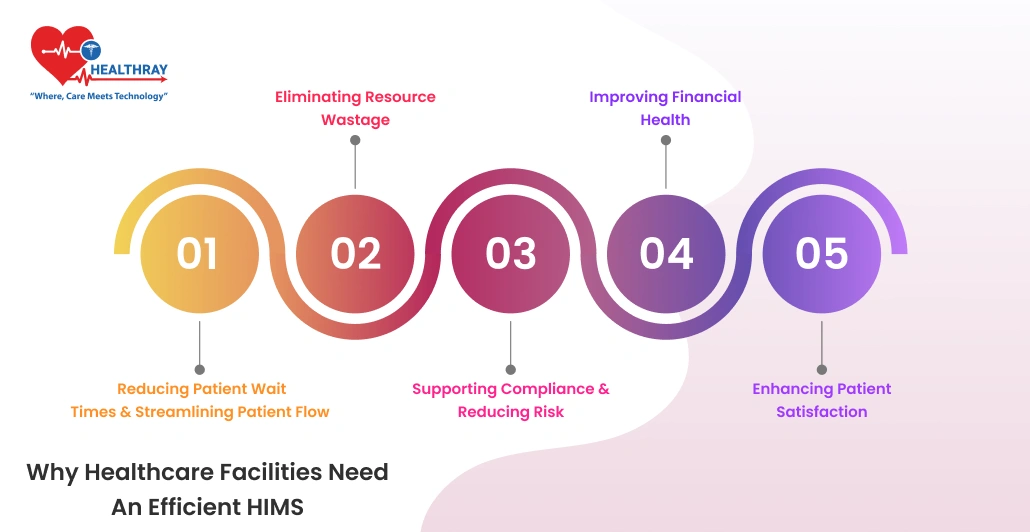
Health care institutions are confronted with a class of problems unique to their daily operations, financial performance, and patient experience. Most of these problems are directly dealt with by a functional Hospital Information Management System (HIMS), which offers hospitals the tools necessary so that they can remain responsive, well-organized, and resource-efficient. Let’s examine some particular issues that HIMS can assist in resolving.
Reducing Patient Wait Times and Streamlining Patient Flow
Waiting is a universal pain point in hospitals. Not only are they a nuisance for patients, they are also wearing out the staff and screwing up the schedule. Patient information can be read and modified in real time with the use of HIMS at the departments. That is ultimately an increase in interdepartmental communication, and that leads to faster and more fluid patient handover. Providing efficient staffing of work hours and appropriate distribution of resources, a HIMS can quickly resolve bottlenecks and deliver fast care to patients.
Eliminating Resource Wastage
The fact that medical devices and staff hours are wasted by the lack of control are common occurrences every day. An efficient HIMS provides real-time tracking of hospital resources, whether it’s the availability of a specific piece of equipment or the status of a particular room. This transparency allows hospitals to not commit to overcommitting or underutilised resources, which can result in improved utilisation and reduced idle assets.
Supporting Compliance and Reducing Risk
Medical institutions generally operate in a constrained environment, where there is little room for patient data privacy. Not having a structured approach makes it difficult to achieve these compliance standards. HIMS features such as security settings (access control, encryption audit trails) which are optimal in order to secure and comply with sensitive data and relevant regulation (such as HIPAA). In addition, by standardizing data input process and digitizing paper records, the likelihood of human error is less, and the rate of costly errors is less.
Improving Financial Health
Revenue leakage frequently stems from billing errors, lost charges, or processes involving insufficient invoicing. HIMS automates billing and integrates with other financial (systems) entities, thereby improving the monitoring of revenue and the management of the payment cycle. It also reduces the most common billing errors and accelerates the insurance claim process, which in turn results in faster reimbursement and better financial status of the hospital.
Enhancing Patient Satisfaction
It is not only due to the quality of the given care that patient satisfaction is influenced, but also in a way by the consecutiveness and rapidity of each stage, from registration to discharge. With an effectively integrated HIMS patients have less time spent waiting, more standardized workflows, and improved access to information. On the other hand, that leads to increased patient satisfaction and, finally, higher patient dropout rates.
A Hospital Information Management System has the power to transform health care delivery by addressing these fundamental problem areas. In the next section, we’ll explore the core benefits that HIMS brings to the table, from improving patient care to streamlining hospital workflows.
Core Benefits of Implementing HIMS
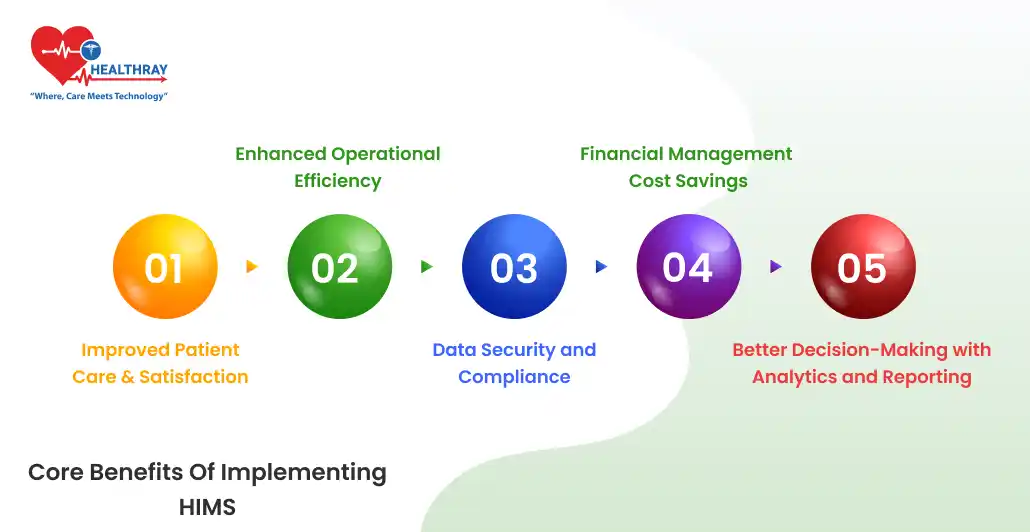
Implementation of a Hospital Information Management System (HIMS) may alter the structure of departmental operations at a hospital. By centralising critical information and improving the ease of workflow, HIMS accelerates, simplifies and reduces stress for all actors – staff, patients, the works. Following are some of the key advantages which a HIMS provides to healthcare institutions.
Improved Patient Care and Satisfaction
One of the valuable functions of a HIMS is, not surprising, its contribution to patient care. It is also likely that clinical staff have access to the necessary data with only a few clicks of the entry key thanks to a common database of patients’ records, medical histories, and treatment plans. This mini access reduces delay and guarantees timeliness and informedness of care to the patient.
By reducing delays and miscommunication, HIMS boosts patient satisfaction. When a patient enjoys an easy, convenient experience from start to finish then they are far more likely to have a positive opinion of the place visit them and will be more likely to recommend the facility.
Enhanced Operational Efficiency
HIMS automates a large quantity of routine tasks (such as appointment scheduling, inventory, room/equipment assignment). With this automation the manual data documentation is reduced, which leads to more time being available to focus on making each patient as the best care as their own unique patient. The HIMS tools will be equipped with real-time monitoring of resources and thus it will be possible to alert staff when a room or a piece of equipment is available, in order to ensure a fluid handoff between the patient and the absence of periods of downtime.
In addition, a HIMS allows the hospital administrator to supervise all operations through a central point. It is possible to continuously observe important performance measures, manage the status of resources, and make changes in staffing, or schedule as required, which leads to an improved hospital environment in general.
Data Security and Compliance
However, because of the rigorous patient data privacy laws, such as HIPAA in the US, data security is critically important. HIMS has strong security functionalities, such as encryption, Access Control, Print Questionnaires and Audit trails, to safeguard confidential data. These systems are aimed at keeping out inappropriate users, and ensuring that authorized users have immediate and safe access to the data they need.
HIMS also simplifies compliance reporting. Having all the information in a defined and structured format, compliance reports and audits can be produced in a shorter time period with a better accuracy which saves time and money with associated risk reduction scheme.
Financial Management and Cost Savings
Good financial management is an essential part for every health care facility and Hospital Management System Software makes it possible to do so by automatic billing, automatic invoicing, and automatic payment tracking. HIMS ensures that the billing and financial aspects of a medical practice are accurate by combining the billing and financial processes of the practice into a single HIMS system which accurately captures and tracks all charges, thereby preventing revenue loss from lost or billing errors.
Doing all that automation not only saves the risk of manual data entry (and its errors) but all aspects of insurance claims and payment processing are also being improved. Hospitals also realize financial benefits due to reduced overhead and a strengthened revenue cycle management.
Better Decision-Making with Analytics and Reporting
Through the ability of HIMS to collect data, it is possible to obtain information that can help facilitate better decision making and thus improve health care administration. Reporting and analytics capabilities are usually found in most HIMS platforms which can report the overall performance of metrics including the patient flow, staff productivities, and resource utilizations. These results can illustrate func-tional breakpoints and locations for assem-bly that administration may use to inform decisions that are data-driven.
Data-driven insights also support budgeting and strategic planning. By seeing where resources are being under- or over-utilized, hospital executives can adjust operations accordingly, ensuring that every resource is used effectively.
The implementation of a HIMS offers healthcare facilities an integrated solution to enhance their efficiency, data privacy and patients’ experience. Next, we’ll look at the key features to consider when selecting a HIMS for your facility to ensure you’re getting a solution that meets your needs.
Key Features to Look for in a HIMS
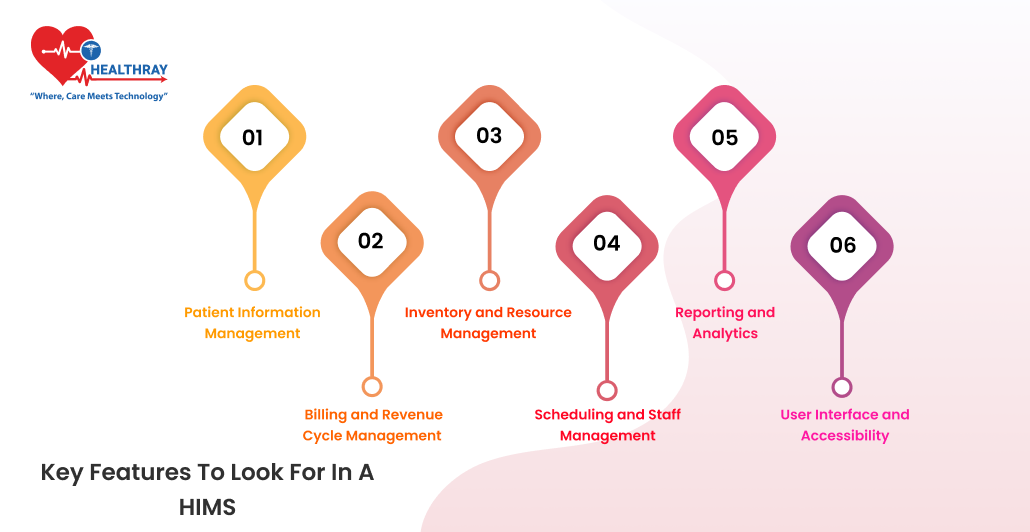
A Hospital Information Management System (HIMS) developed should be selected that is equipped to best suit the unique conditions of your facility. The key building blocks for a successful HIMS for improving patient care, optimizing hospital operations, and enabling better financial and operational decision making are described below.
Patient Information Management
Ideally, a powerful HIMS would have a high efficacy of patient information management module containing all the patient data including, medical history, treatment, demographics, and contact information. This function allows medical staff to immediately retrieve the patient’ s medical record, thereby, in theory, ensuring that no relevant information is missed during patient care. Not only an effective system for patient record can help reduce errors, but also can ensure the continuity of service and it thus can play a role of key factor contributing to the quality of service delivery.
Billing and Revenue Cycle Management
Precise invoicing and effective revenue management are a keystone to financial health. An effective HIMS should combine billing, insurance verification, payment tracking, and claims management into a single integrated module. HIMS can reduce errors, accelerate billing, etc., by automation. This is a powerful adjunct to reducing administrative costs and to make sure that hospitals recover all costs owed to them, prevent revenue leakage, and expedite reimbursement by insurance payers.
Inventory and Resource Management
Resources, medical equipment, and pharmaceuticals at the hospital are to be tracked that they are not lost, and are always provided to when needed. HIMS offers real-time information of stock management, which is then processed by stock control management, medical stock control, and identifying which resource is used most. This capability guarantees that resources are always on hand and no more than is required, a factor which can put a strain on budgets. Real-time resource management also enhances patient care as this positively facilitates that which is required to be in place when it is needed.
Scheduling and Staff Management
Charges and delays are useful weapons to match the needs of patients with the ability of staff. A HIMS can assist in coordinating schedules for doctors, nurses, and other healthcare staff, guaranteeing that shifts are assigned correctly and that timely care is delivered to patients. In addition, HIMS has been demonstrated to avoid scheduling overlaps, to maintain information regarding hours worked and work shifts, and to monitor work flow productivity.
Reporting and Analytics
Data-driven decision-making is invaluable for hospital administrators. HIMS (including reporting and analytic features) can enable health care facilities to analyse operational data, detect trends and make decisions. Reporting applications provide data on patient throughput, resource utilization, finances, and employee efficiency, etc. Analytics can shed light on patterns which will signal potential areas in which to do better, to inform the strategic long term planning of the hospital and will enable hospital executive to adopt a proactive approach to help improve the operation.
User Interface and Accessibility
A user-friendly interface is critical for any HIMS. The system must be as simple as it can be for all users (administrative staff, medical personnel etc. so that all users can use it without much training required. Another, in addition, is that the capacity of features like mobile usability or remote use enables health-care staff to access information from any location in the facility (also off-site) with only a few mouse clicks – immensely helpful for on-call doctor or in emergency etc.
Conclusion
Hospital information Management System (HIMS) has evolved to become an important asset of health care organizations to focus on the improvement of its efficiency, performance optimization, as well as delivering an improved quality of patient care. By the integration of data processing, automation of routine work and support of real-time decisions, a HIMS allows hospitals to solve some of the most frequently encountered operational issues, including time out, overconsumption of resources, nonadherence and also the management of finances.
If you’re ready to explore Hospital Management System, consider reaching out to reputable vendors, assessing your facility’s unique needs, and building a cross-functional team to support the implementation.
